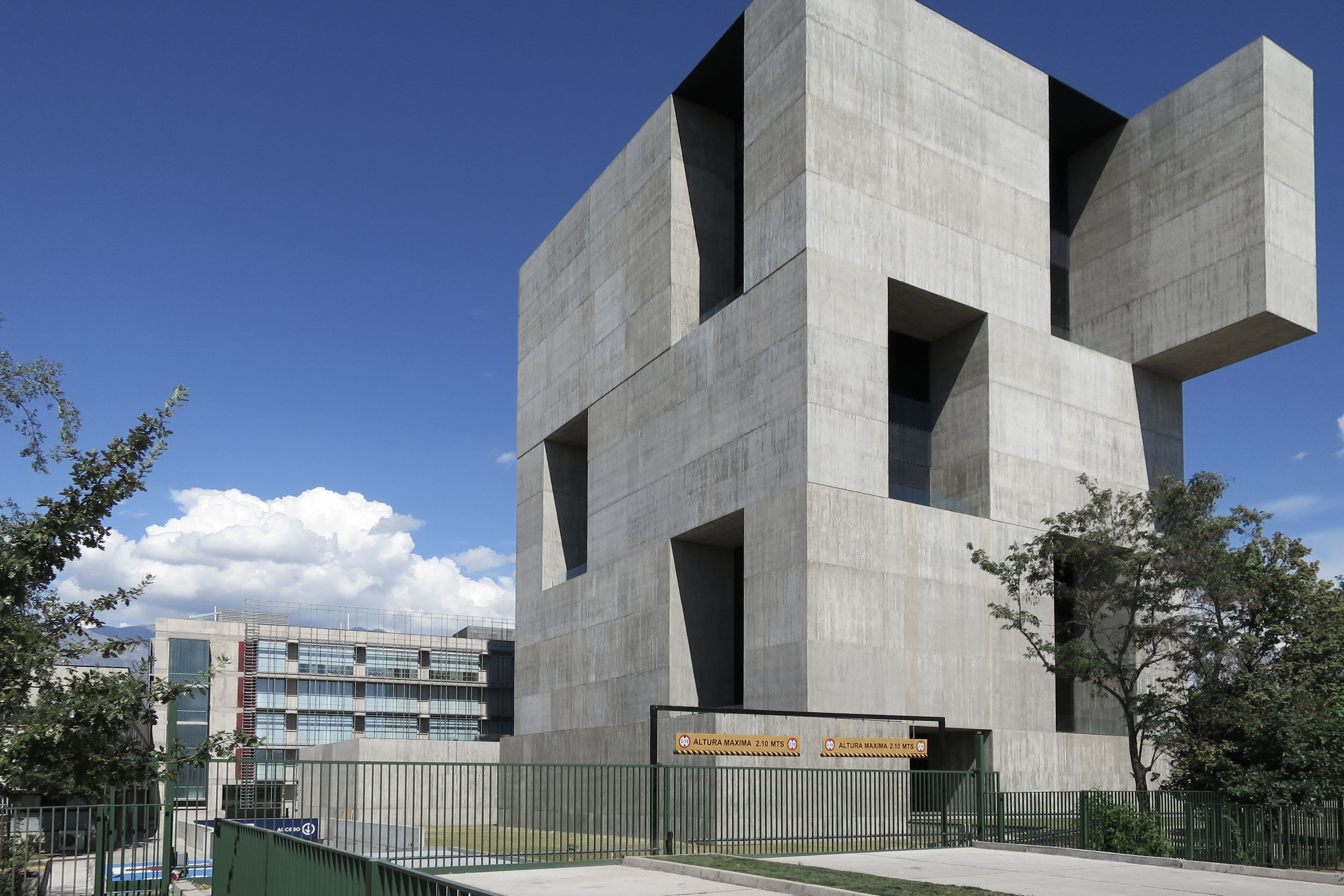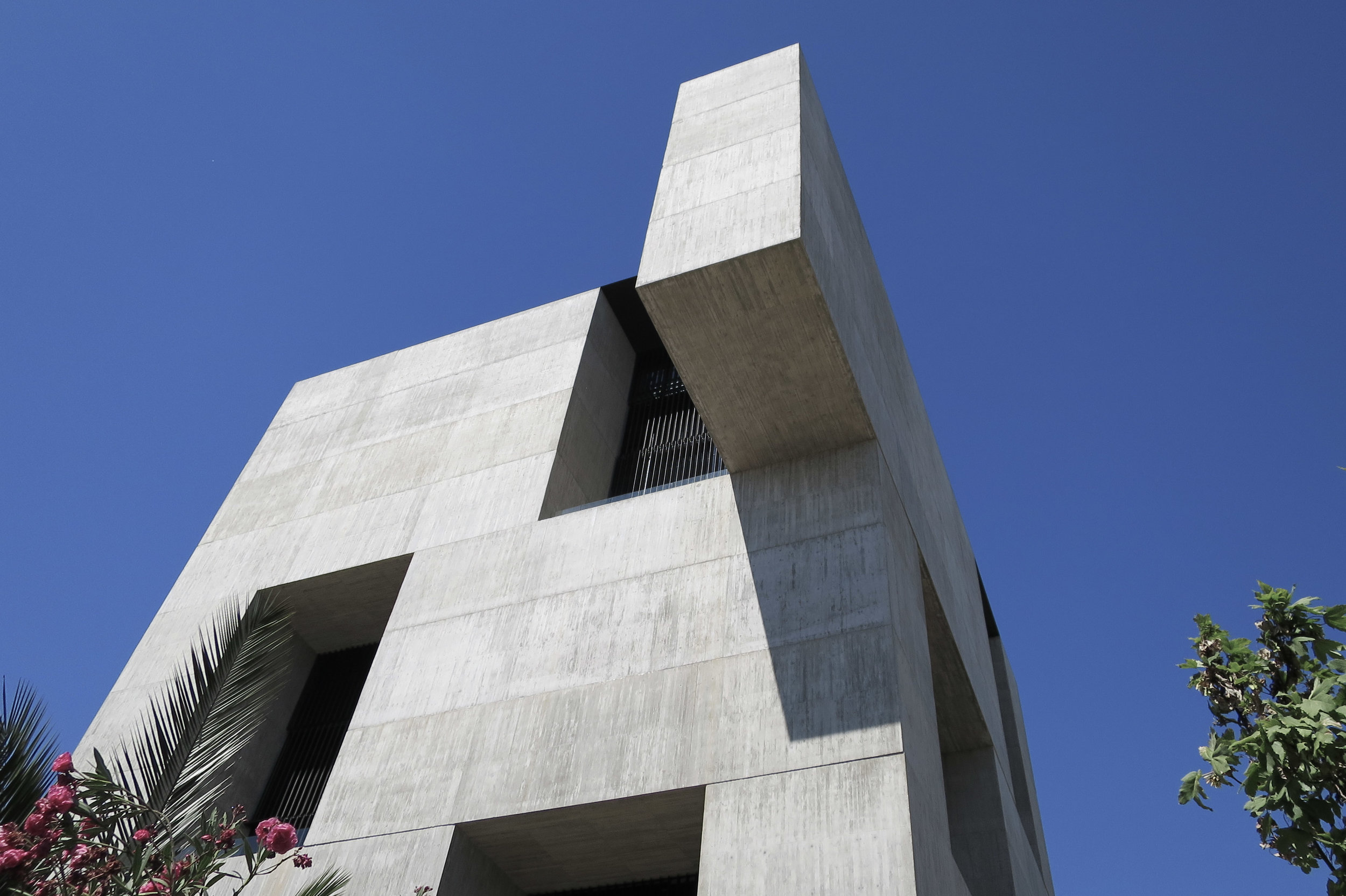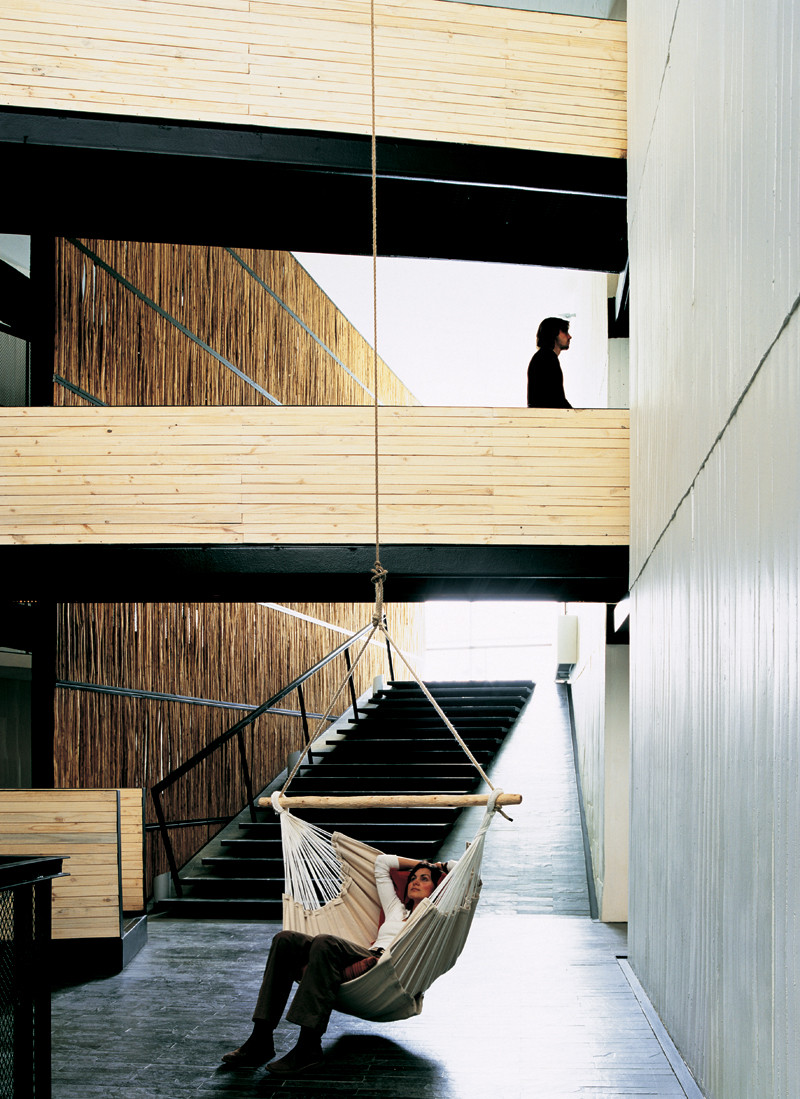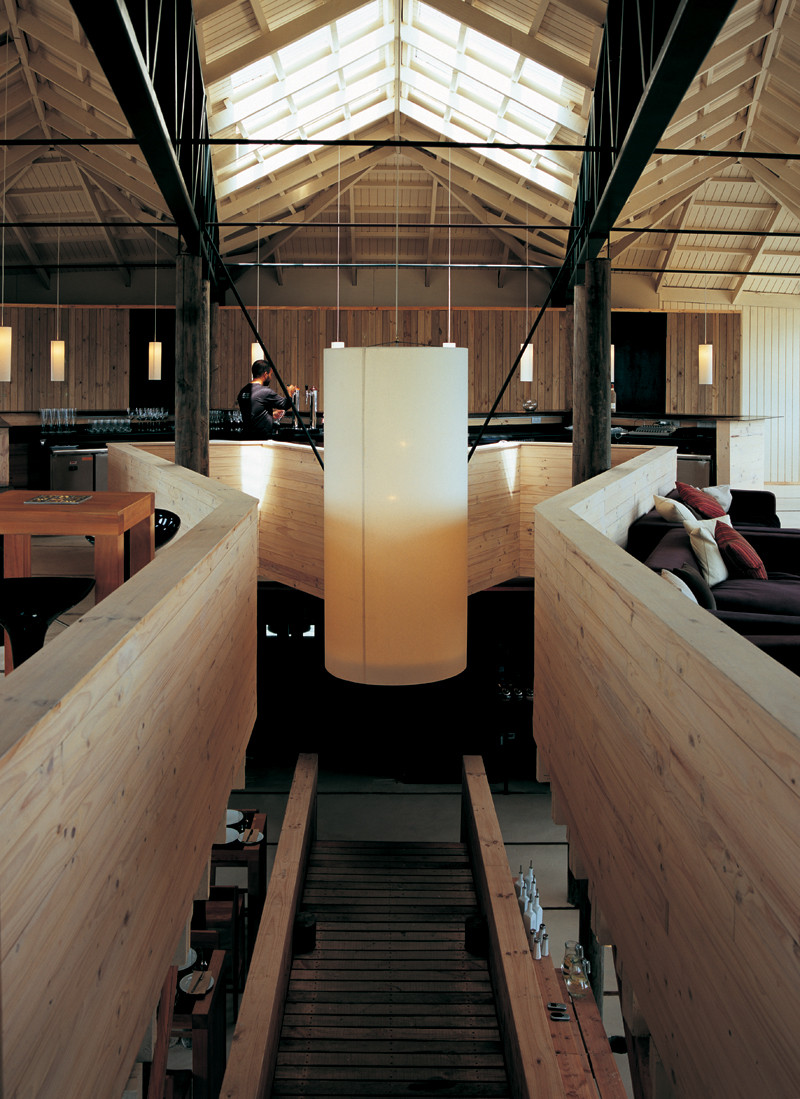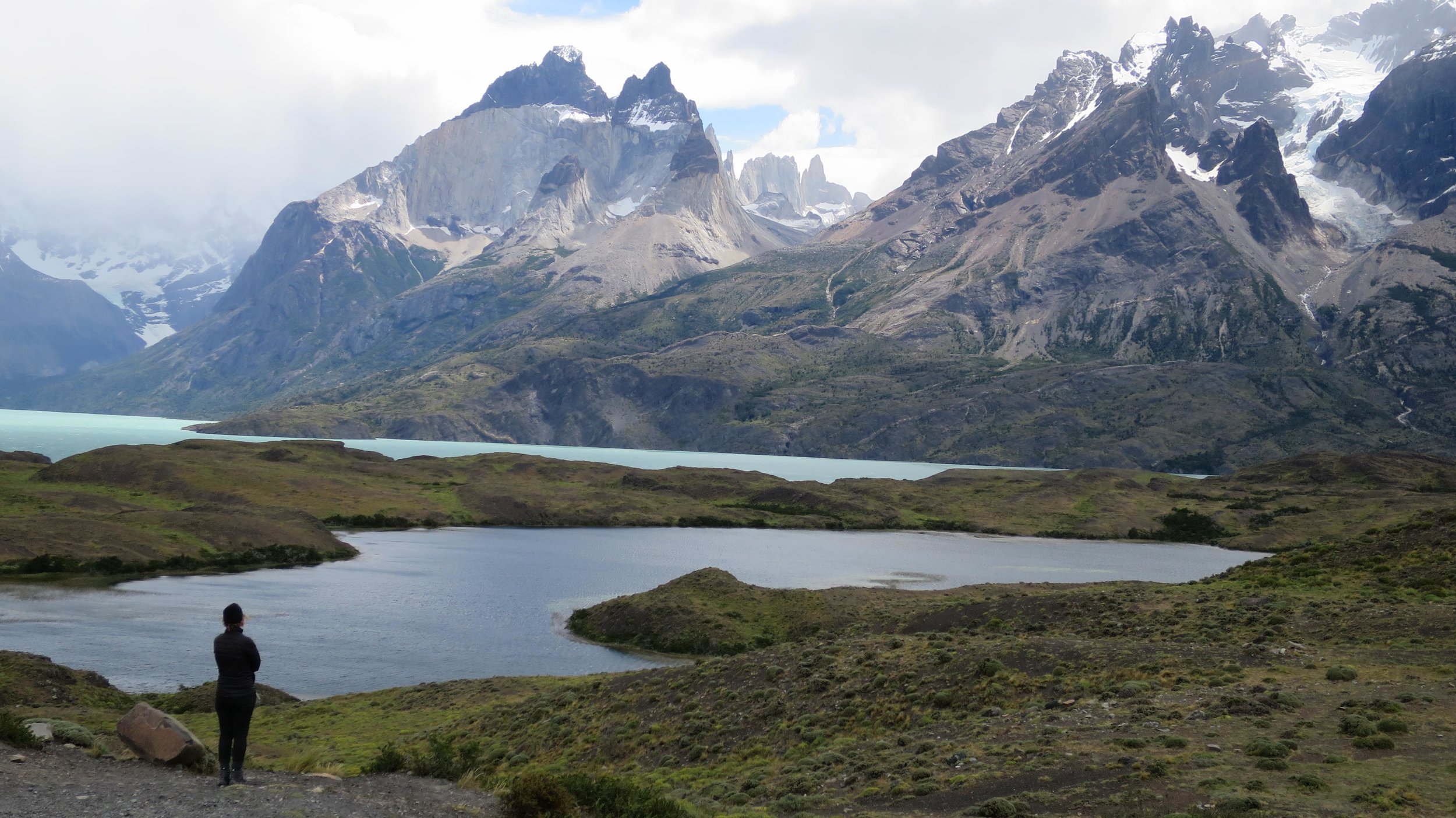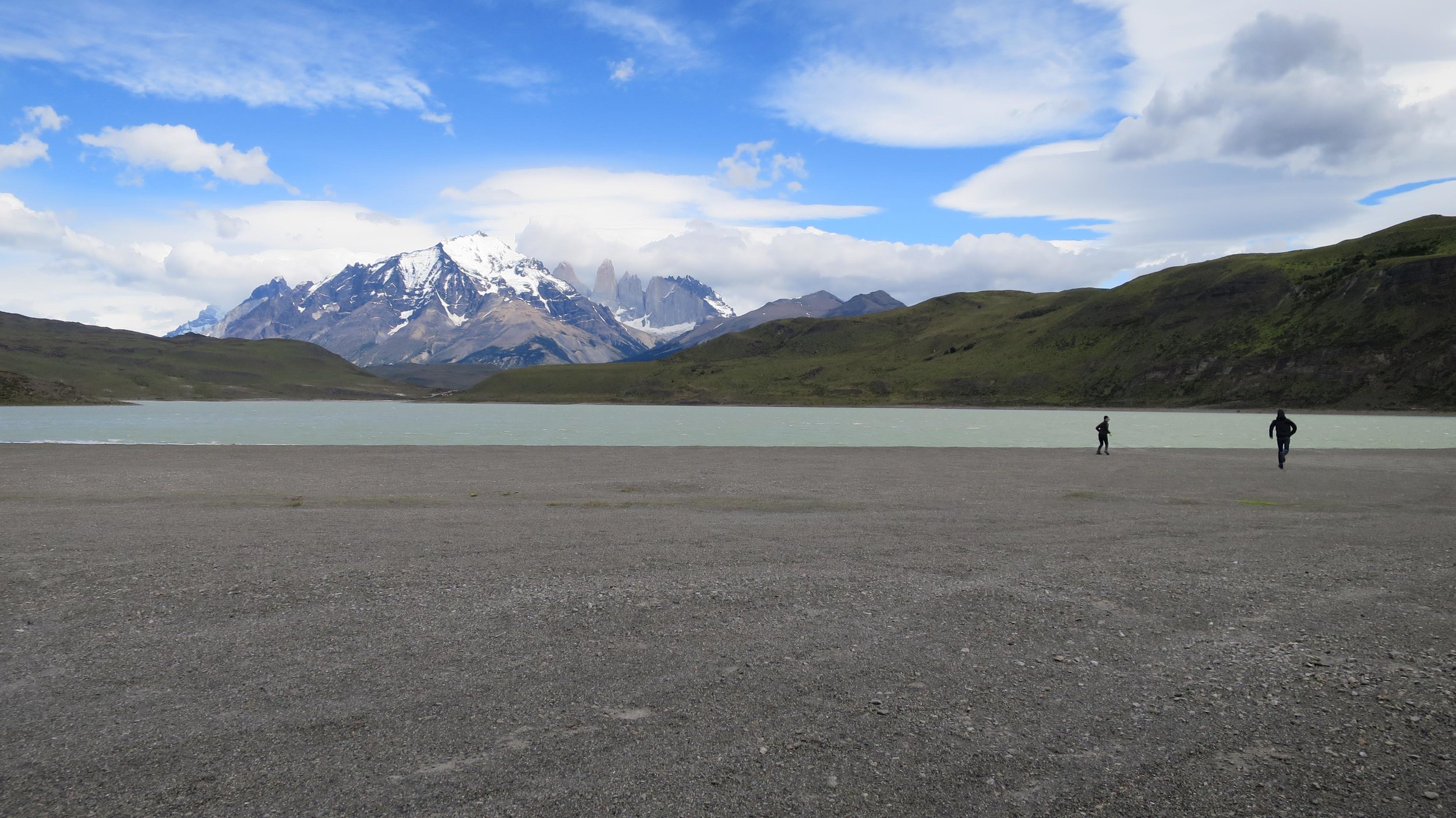TRAVEL TO PATAGONIA AND RECENT PRESS
Architectural Travels
We didn’t expect to find architecture in Chilean Patagonia, at the “end of the world” as they say. And it wasn’t just ordinary architecture, but world-class, precision-built, drop-dead-gorgeous architecture. Architecture as extraordinary as the Patagonian landscape itself, and that’s saying A LOT.
The trip started in Santiago, Chile. Our first stop was the Museum of Memory and Human Rights by estudio america, 2010. The museum chronicles a dark part of Chilean history, the brutal dictatorship of the Pinochet regime (1973-1990), and commemorates its victims. You enter the museum below ground and gradually wind your way up “into the light,” where you are given powerful vantage points onto the city. Exterior pools and an expansive, submerged courtyard encourage quiet contemplation. Most moving to us were the survivors themselves, who toured the exhibits with tears streaming down their faces.
Visiting the museum helped us understand why there is such incredible architecture throughout Chile and, despite its remoteness, in Patagonia itself. True, the authoritarian Pinochet regime had suppressed the arts for almost two decades, but when democracy returned the artists and architects who were silenced and hidden began to flourish. It’s a true testament to human resilience.
We ventured outside the city center to see Pritzker Prize winning architect Alejandro Aravena's UC Innovation Center by Elemental, 2014. Although security wouldn’t let us on campus or into the building itself, we were able to see the exterior from several different angles. We loved the monumentality and scale of the structure, which evoked the grandeur of Roman ruins.
Our stay in Santiago was way too brief. We could have easily spent a week (or two) there. The city is truly on par with European cities in terms of culture, museums, cleanliness, parks, quaint neighborhoods, and its super efficient subway system. Why didn’t we know about this city before?
From Santiago we flew to Punta Arenas, where we rented a car and drove 3 hours north to Puerto Natales, considered the gateway city to Chilean Patagonia’s famous Torres del Paine National Park. Along the way we veered off onto dirt roads to see penguins that had made a home for themselves on coastal farmland. We could barely walk along the wooden pathways because the wind was blowing so hard. The penguins, on the other hand, clearly loved it.
There are five - YES FIVE - incredible architectural hotels to stay at while exploring this area of Patagonia. The first was our home base for the entire 10-days of our trip: The Remota Patagonia Lodge by German del Sol, 2006. We loved the meandering layout, the grass roof, the location (just outside of Puerto Natales, right on the sea), and how the architecture evoked the simplicity of local sheep shearing sheds. We felt comfortable wandering around the elongated corridors with their repetitive columns, gradual ramps and expansive views. It almost seemed like we were walking in the natural landscape itself. Torres del Paine was an easy day trip (a beautiful one-hour drive) away.
Second, right down the road from the Remota, is The Singular Patagonia Lodge by Pedro Kovacic and Enrique Concha, 2011. To be honest, this is where we had wanted to stay, but it was fully booked. We did spend several evenings here having drinks and dinner at the bar. Their Old Fashioned was honestly the best we have had anywhere in the world, and their Pisco Sour was excellent too. Needless to say, there was an Australian bartender on staff who kept standards HIGH.
The brick structure was originally a Victorian sheep processing facility, built by the British in 1915 to prepare meat, wool and hide for export to Europe. Abandoned herding pens, barns and equipment are preserved and skillfully woven (with the help of minimalistic glass walkways) into the new design. The result is at once disturbing and jaw-dropping beautiful. Due to strict Chilean conservation rules, when you arrive it literally feels like you are in a wind-swept deserted parking lot next to an abandoned building. Soon, however, cheerful staff emerge to direct you through a perfectly kept barn to a pristine glass cube. Here you wait for a funicular to take you down to the hotel’s main entrance. It’s like being in a movie.
Third is the Indigo Patagonia Hotel by Sebastián Irarrázabal, 2007. It’s centrally located in in the town of Puerto Natales, where you can easily walk to outdoor outfitters and local restaurants. We had lunch and cocktails and simply hung out in their restaurant several times during our trip. It was very low key. We loved the ingenious system of ramps, steps, stairs and bridges that wind their way up through the six-story structure. There are also comfortable nooks to curl up in to read a book, have a drink or watch other guests find their rooms. Well done.
Fourth, is the Tierra Patagonia Hotel & Spa by Cazu Zegers (a female architect!), 2011. This is probably the most breathtaking hotel we have ever experienced. We stopped here after a long day hiking Torres del Paine to gape at the architecture. What did we love most? Experiencing architecture that’s seamlessly blended into the landscape. As you drive towards the hotel you can’t even see it, the building completely and quietly defers to the mountains and the lake. As you get closer, however, the powerful and precisely-crafted structure gradually emerges. It’s like a fossil in the landscape. Truly one-of-a-kind.
Fifth, is Awasi Patagonia by Felipe Assadi, 2014. It’s a bummer that this beautiful lodge was still under construction during our trip to Patagonia; we learned about it later via John Pawson’s brilliant instagram feed. The site plan is extremely thoughtful. Instead of being one gigantic complex, individual buildings are strewn across the landscape, allowing them to peacefully recede. The 1-meter modulation of black columns further obscure the villas amongst the trees. Torres del Paine becomes the showpiece, not the architecture.
Finally, we can’t stress enough how spectacular Torres del Paine National Park is. We began by driving around the perfectly planned roads to absorb the views, sit by Caribbean-colored lakes, and watch Dr. Seuss-like guanacos and rheas slowly cross the road. After we got our bearings, we did several eight-hour day hikes, the most spectacular of which ended at a picturesque lake near the Base of the Towers. There was also a great mix of people on the trails: student backpackers, hard-core climbers, wealthy thrill seekers and Chilean families alike. There were even (as we liked to call them) real mountain men and women hiking the multi-day “W” circuit.
One last thing. If you go to this part of the world you can’t miss the Perito Moreno Glacier located in Los Glaciares National Park, Argentina. It’s one of the few advancing glaciers left in the world. We stood for hours staring at the 10-story wall of ice, as gigantic pieces exploded from the face and fell into the icy water.
Incredible.
#lovetostayhere
Please, please, please - can we stay here? At the Cien House in Concepcion, Chile? We want to read art books on every floor, watch rain on the windows and see the sunset from the rooftop. The house is so simple, so pure and so peaceful. Cristobal Palma really brings the architecture to life in this incredible video. Designed by Pezo Von Ellrichshausen, 2011. Click the image below to watch the video.
PlansMatter in the News
PlansMatter is described a “passion project,” derived from our “love of traveling to well-designed abodes.” Yep! The article also outlines our recent shift away from directly managing properties towards being an “architectural hotel and vacation rental aggregator” for design savvy travelers. Thanks Editor At Large!
The Chicago Tribune describes us as “architecture geeks”. While Travel + Leisure says we are "architectural nerds". Definitely true! Love it.
Visit our press page to see all of the recent articles.




